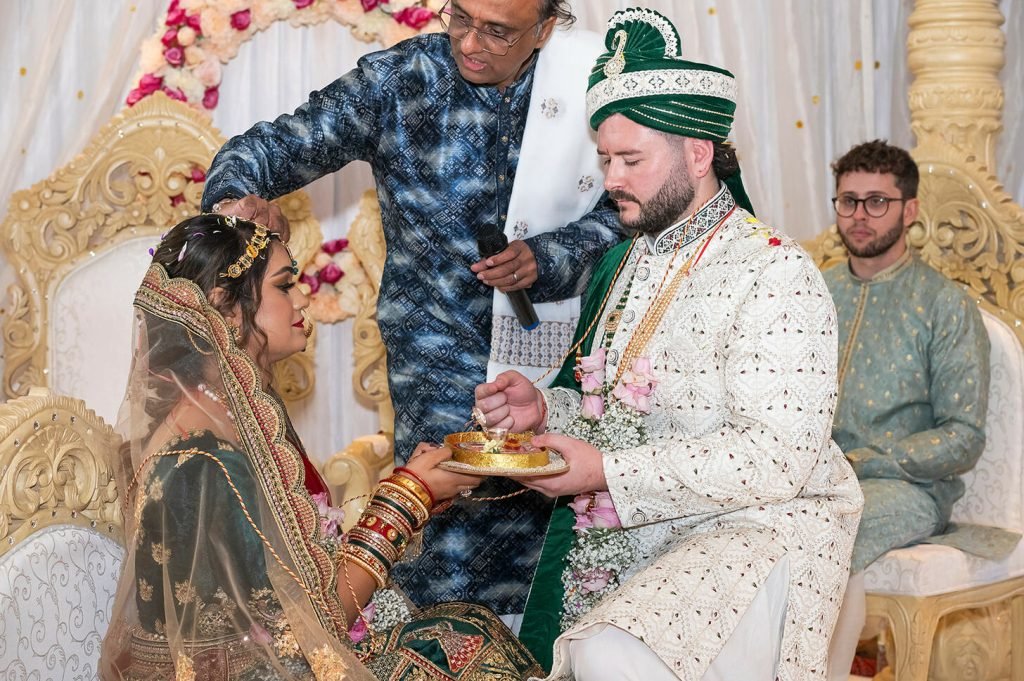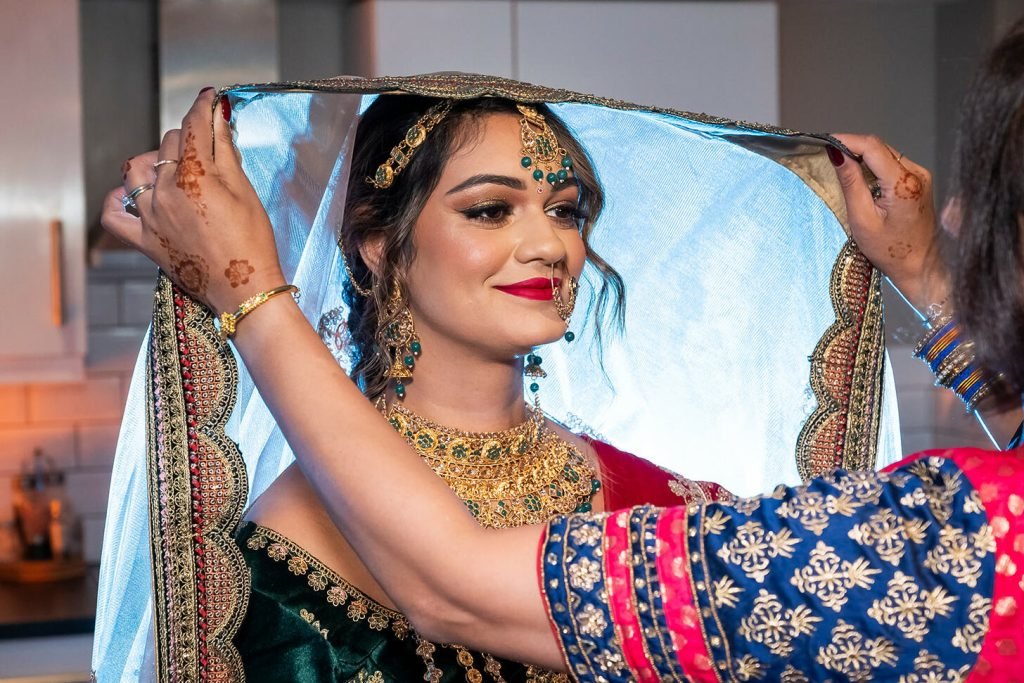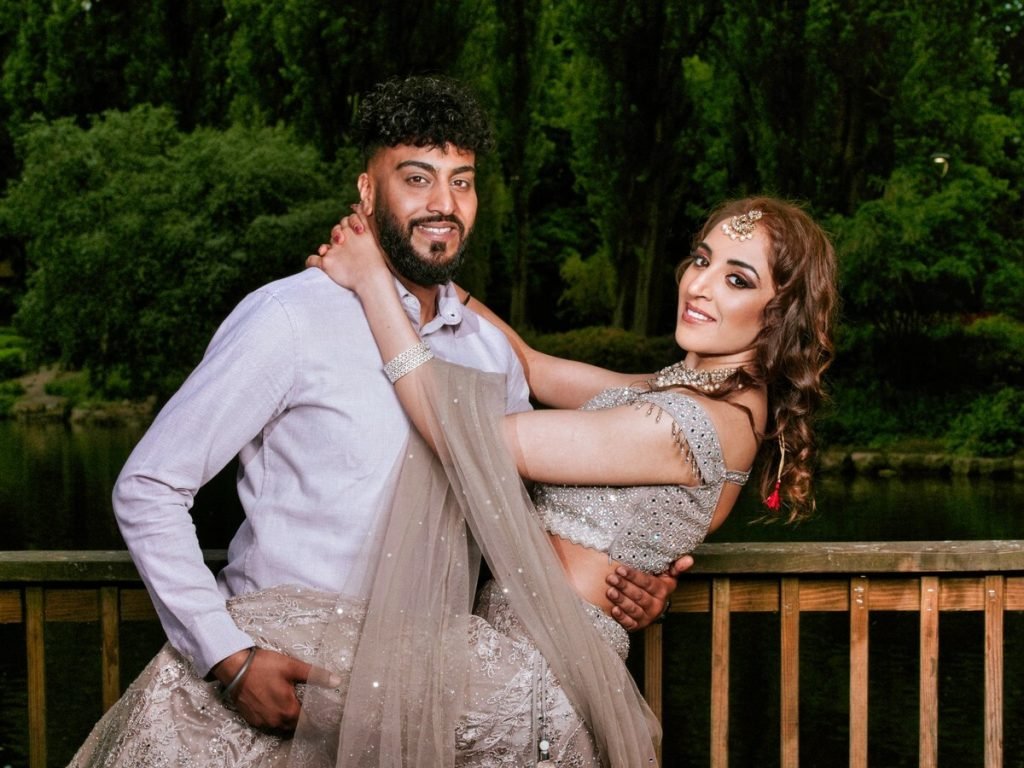As I reflect on the beauty of a traditional Gujarati wedding, I am reminded of the vibrant colours, the joyous celebrations, and the deep-rooted traditions that make this occasion so unique.
A Gujarati wedding is a kaleidoscope of emotions, a harmonious blend of rituals and ceremonies that symbolise unity, love, and commitment. The bride and groom are at the centre of this joyous celebration, surrounded by family and friends.
This comprehensive guide will illuminate the rich tapestry of Gujarati wedding traditions, offering insights into the cultural significance behind each ritual and providing practical advice on blending traditional elements with contemporary touches.
Key Takeaways
- Understanding the cultural significance of Gujarati wedding traditions
- Exploring the symbolism behind each ritual and ceremony
- Blending traditional elements with contemporary touches for a unique celebration
- Creating a meaningful foundation for marriage through time-honoured customs
- Enhancing the overall wedding experience for the couple and their guests
The Cultural Essence of Gujarati Weddings
The essence of a Gujarati wedding lies in its vibrant celebration of love and union, bringing together families in a spirit of joy and reverence. Each Gujarati wedding ceremony is a testament to the rich cultural heritage and the pivotal role that family plays in the celebration.
Vibrance, Rituals, and Community Spirit
Gujarati weddings are a kaleidoscope of colours, traditions, and emotions. The vibrant rituals and high-energy dance performances create an atmosphere of jubilation, where spiritual blessings flow alongside bursts of colour, music, and food. The community spirit is palpable as the ceremony transcends beyond the couple to become a celebration of familial bonds.
The Significance of Family in Gujarati Celebrations
In Gujarati culture, weddings are a celebration of family and the new union between two individuals. The bride’s family takes on the role of gracious hosts, while the groom’s family arrives as honoured guests, creating beautiful moments of cultural exchange and mutual respect. Elders are revered throughout the celebrations, with their blessings considered essential for the couple’s prosperous future together.
- The emotional farewell ceremony (Vidaai) captures the bittersweetness of separation and the joy of new beginnings.
- Family involvement extends beyond ceremonial roles to the practical aspects of wedding planning.
Planning Your Gujarati Wedding: First Steps
The journey to your Gujarati wedding day starts with foundational decisions: setting the date and choosing the perfect venue. This initial phase is crucial as it sets the tone for the entire celebration.
Setting the Date and Venue Selection
Selecting a date and venue are intertwined decisions that form the backbone of your wedding planning process. For those looking for a luxurious setting, luxury Gujarati wedding venues in the UK offer a blend of traditional charm and modern amenities.
Creating the Guest List and Invitations
Once the date and venue are finalized, it’s time to prepare the guest list and send out invitations. Gujarati weddings typically have a large number of guests, including family members, friends, and relatives. The invitations are often elaborate and may include traditional motifs and symbols.
The guest list for a Gujarati wedding is extensive, reflecting the communal nature of these celebrations. Here are a few key considerations:
- Gujarati wedding guest lists typically extend beyond immediate family to include extended relatives, community members, and business associates.
- Traditional Gujarati wedding invitations (kankotri) serve as artistic cultural artifacts, featuring vibrant colours, gold accents, images of Lord Ganesha, and intricate patterns.
- Modern couples are incorporating digital elements alongside traditional paper invitations, creating wedding websites with RSVP functionality.
- The wording of invitations follows specific cultural protocols, with the names of elders featured prominently and respectful language used throughout.
- Consider creating tiered invitations, with certain guests invited to all ceremonies and celebrations, while others might attend only specific events.
By thoughtfully curating your guest list and designing invitations that reflect your cultural heritage, you set the stage for a memorable wedding experience.
Essential Pre-Wedding Ceremonies
The pre-wedding ceremonies in a Gujarati wedding are a beautiful blend of tradition and celebration, setting the stage for the main event. These rituals are not just significant for their cultural importance but also for the joy and excitement they bring to the families involved.
Chandlo Matli and Gol Dhana
The Chandlo Matli and Gol Dhana ceremonies are two of the initial pre-wedding rituals. Chandlo involves applying a decorative red mark on the bride’s and groom’s feet, symbolizing their marital status. Gol Dhana, on the other hand, is a ceremony where the bride is given a mixture of coriander seeds and jaggery, signifying a sweet and prosperous life ahead.
Mehendi Ceremony: Artistry and Celebration
The Mehendi Ceremony is a cherished pre-wedding ritual where intricate henna designs are applied to the bride’s hands and feet. This ceremony is not just about beautification; it’s a symbol of good luck and happiness for the couple. The darker the henna stains, the stronger the marriage is believed to be.
Sangeet and Garba: Music and Dance Traditions
Sangeet and Garba are the highlights of the pre-wedding festivities, filled with music and dance. The Sangeet evening is a celebration where both families showcase their talents through performances, often including rehearsed dances and skits. Garba, a traditional dance form, involves participants moving in concentric circles around a central lamp or image of Goddess Durga, symbolizing the cyclical nature of life.
| Ceremony | Significance |
|---|---|
| Chandlo Matli | Decorative red mark symbolizing marital status |
| Gol Dhana | Mixture of coriander seeds and jaggery for a sweet life |
| Mehendi | Henna application for good luck and happiness |
| Sangeet and Garba | Music and dance celebrations before the wedding |
The Gujarati Wedding Guide to Wedding Day Rituals
As the wedding day unfolds, the vibrant tapestry of Gujarati rituals comes alive, weaving together tradition, love, and celebration. The wedding day is filled with significant ceremonies that hold deep emotional and spiritual meaning.
Baraat and Swagatam: The Grand Arrival
The Baraat, a lively procession accompanied by music and dancing, marks the groom’s grand arrival at the wedding venue. The Swagatam ceremony, or welcome ritual, follows, where the bride’s family warmly welcomes the groom with traditional offerings and blessings, setting a joyous tone for the wedding celebrations.
Jaimala and Madhuparka Rituals
The Jaimala ceremony involves the exchange of garlands between the bride and groom, symbolizing their acceptance and love for each other. The Madhuparka ritual follows, where the groom is offered a sweet drink, typically made from honey, as a gesture of hospitality and respect, further strengthening the bond between the families.
Mangal Pheras and Sacred Vows
The Mangal Pheras, or the seven steps around the sacred fire, are the cornerstone of the Gujarati wedding ceremony. As the couple circles the sacred fire, they make solemn vows to each other, promising love, loyalty, and companionship. The bride’s father gives her hand to the groom in the Kanyadaan ritual, symbolizing the transfer of responsibility and blessing their union. The couple then performs the seven rounds around the sacred fire, each round representing a specific vow, sealing their bond.
Post-Wedding Traditions
The post-wedding rituals in a Gujarati wedding are a beautiful blend of tradition, emotion, and new beginnings. These ceremonies are not just a conclusion to the wedding celebrations but a significant start to the couple’s new life together.
Vidaai: The Emotional Farewell
Vidaai, or the farewell ceremony, is an emotional and poignant moment where the bride bids goodbye to her family and begins her journey to her new home. This ritual is filled with tears and heartfelt emotions as the bride leaves the comfort and familiarity of her parental home.
The significance of Vidaai lies in acknowledging the bittersweet nature of a daughter’s departure, marking a significant change in her life. It’s a moment that is both sorrowful and celebratory, as it signifies the bride’s transition to a new phase of life.
Ghar Nu Laxmi: Welcoming the Bride
Upon entering her new home, the bride is welcomed as Ghar Nu Laxmi, the embodiment of Goddess Lakshmi, symbolizing prosperity and abundance. The Ghar Nu Laxmi ceremony involves several rituals, including the bride kicking a kalash filled with rice and coins to spread prosperity in her new household.
- The mother-in-law performs aarti, circling a lit diya around the couple’s faces to ward off evil spirits and bless their new life together.
- In some traditions, the bride leaves footprints dipped in alta or kumkum-mixed water, symbolizing the arrival of Lakshmi and the good fortune she brings.
This welcoming ritual establishes the bride’s revered position in her new family, acknowledging her as a bringer of divine blessings and prosperity.
Creating a Memorable Gujarati Wedding Experience
As we delve into the intricacies of Gujarati wedding planning, it’s evident that the key to a memorable experience lies in the harmonious integration of traditional elements and modern flair. The wedding venue sets the stage for the celebrations, and every detail, from the decor to the attire, contributes to the overall ambiance.
Traditional Attire and Jewellery
The bride and groom’s attire is a reflection of the rich Gujarati culture, with vibrant colours and intricate designs. Traditional outfits like chaniya cholis and kediyus are adorned with mirror work and embroidery, making them truly stunning. The jewellery, including maang tikka and bangles, adds a touch of elegance to the overall look.
Authentic Gujarati Cuisine
Gujarati cuisine is renowned for its diverse flavours and vegetarian delights. The wedding feast typically includes an array of dishes such as undhiyu, handvo, and various traditional sweets. Serving authentic Gujarati cuisine enhances the cultural experience and delights the guests.
Decor and Thematic Elements
The decor and theme of a Gujarati wedding are often vibrant and colourful, reflecting the festive spirit of the occasion. From colourful drapes and floral arrangements to intricate rangoli designs, every aspect of the decor is carefully chosen to create a magical ambiance at the venue. The mandap serves as a ceremonial space and artistic focal point, featuring intricate wooden carvings and symbolic elements.
Capturing Your Gujarati Wedding Story
Capturing the essence of your Gujarati wedding requires a blend of artistic vision and cultural understanding. With its rich cultural heritage, a Gujarati wedding is a treasure trove of moments waiting to be captured, from the vibrant part Gujarati rituals to the emotional union of the couple.
The Importance of Professional Photography and Cinematography
Hiring a professional photographer and videographer is essential to preserving the memories of your special day. They will capture the wedding ceremony, the blessings of the family, and the joy of the rituals, ensuring that every moment is beautifully preserved.
Ikonic Media Solutions: Luxury Wedding Photography Services
Ikonic Media Solutions brings a distinctive fine-art editorial approach to Gujarati wedding photography, creating images that balance timeless elegance with authentic emotional storytelling. Their team understands the significance of each part Gujarati wedding ritual, allowing them to anticipate and capture meaningful moments while respecting ceremonial boundaries.
With a signature style that combines journalistic documentation with artistic composition, Ikonic Media Solutions preserves the vibrant colours, intricate details, and emotional exchanges that make each Gujarati wedding a unique expression of love and family union. Based in the UK but available worldwide, they offer comprehensive coverage options, creating a complete visual narrative of your wedding journey.
Conclusion
A Gujarati wedding is more than a single day – it’s a cultural journey that weaves together heritage and modern love. Throughout this guide, we’ve explored the intricate rituals that make Gujarati weddings so distinctive, from vibrant pre-wedding celebrations to the sacred ceremony and joyful post-wedding traditions. For couples planning their special day, remember that while rituals provide a meaningful framework, your celebration should reflect your unique love story. The beauty of these rituals lies in connecting the couple to their cultural heritage, creating a sense of continuity and belonging that enriches their union with blessings. Ikonic Media Solutions captures these moments beautifully.



